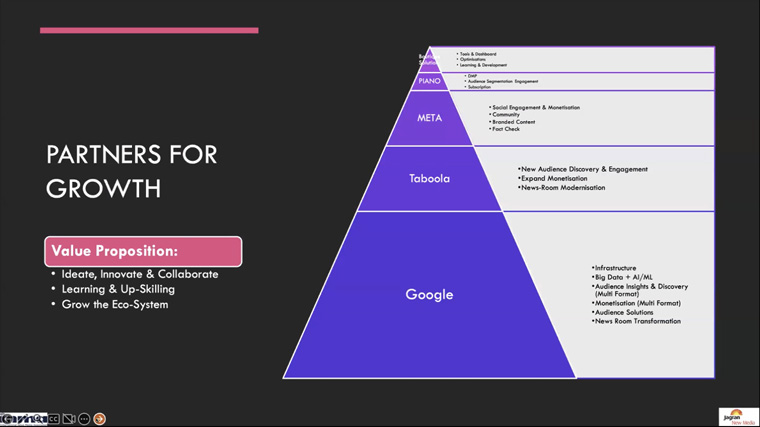Jagran New Media uses data, tech to strengthen its core business proposition
Conference Blog | 28 August 2023
Bharat Gupta, CEO of India’s Jagran New Media, sees the enormous potential for opportunities in the rapidly growing digital advertising segment of the overall advertising economy for news publishers, particularly in a country with 750 million Internet users and 54% penetration — the second largest internet population in the world, poised to be first next year.
“The needle is quickly shifting from monologue communication to interactive experiences,” Gupta told INMA members during the recent South Asia News Media Summit. “I think this is the most important fundamental change” for news publishers right now.
The technological revolution of Web 3.0 requires a “paradigm shift in creative thinking,” he said. There’s a “growing need for literacy and advocacy toward emerging tech” as Jagran works on building a trusted news pipeline for a “New Bharat” that is both sustainable and scalable.

How Jagran is using data and tech
At Jagran, data and technology are being used in three primary ways:
-
To build scale: Moving beyond only audience numbers to include advertisers and authoritative voices.
-
To drive impact: Moving beyond statistics like pageviews to the impact of content on creating an inclusive and progressive society, business environment, and digital ecosystem.
-
To make the business sustainable: Moving to a business model focused on “future-ready” tech and diversified revenue and audience streams.
With all the potential opportunities, Gupta acknowledged, there are also several challenges, including balancing monetisation with the culture and purpose of the content. To work on solutions, he said, they grouped the challenges according to three overarching goals:
-
Supporting digital revenue growth
-
Growing and retaining audiences across all digital platforms
-
Enabling thought leadership and innovation.
From there, Jagran was better able to determine what tech might be useful in achieving each set of goals.
Tech partners
One of the keys to both growth and balance has been working with partners on things like infrastructure, audience insights, and monetisation rather than always trying to build in-house AI or ML models, Gupta said. Many of the solutions to Jagran’s needs have come under “the Google umbrella,” though they also partner with Taboola, META, and Piano, among others.
Google, for instance, helps with scaling. “It used to be a nightmare to scale up or down,” he said, “because we hosted sites on five to six different platforms. Now we have auto-scaling.”

While the questions they ask internally at Jagran are hard to answer in a quantifiable way — “What is the purpose we imagine for our content? What is the experience we imagine our users will have with our content? What kind of community engagement can we enable with our content?” — audience segmentation and engagement can be measured.
And Piano helps with that. That enhanced segmentation allows Jagran to create successful products to appeal to age-based and language-based audience subsections.
A combination of “content plus data science plus technology opens the door” to several monetisation options, including advertising, subscriptions, and syndication. There are layers of tech security and privacy tools between users and the database, too, which helps keep both the audience’s and the publisher’s data safe.
Jagran has also used technology solutions to separate out each content platform as its own “microservice” (news is one microservice, video is another, etc.). This “allows us to scale deployment across different products more quickly,” Gupta said.
All of these tools and partnerships have helped Jagran grow. Gupta said the media company is among the 30 global news and information publishers with 85 million users. Over the past four years, “We’ve transformed the company from a newspaper company to a content-first company” in which audience segmentation informs new product genres that, in turn, unlocks greater value,” he said.
“There has been a lot of experimentation and fun,” Gupta concluded, “but the digital party is over and it’s time to get serious. People are now worried about whether there’s any sustainability in this model. The only way to introduce that is by ensuring you behave like a startup — until and unless you learn to stand on your own, you’ll never be able to run.”






























